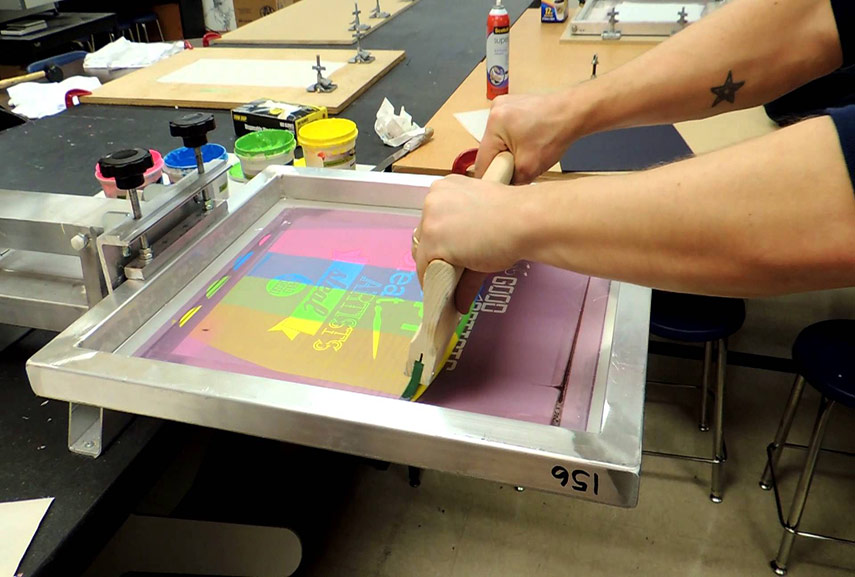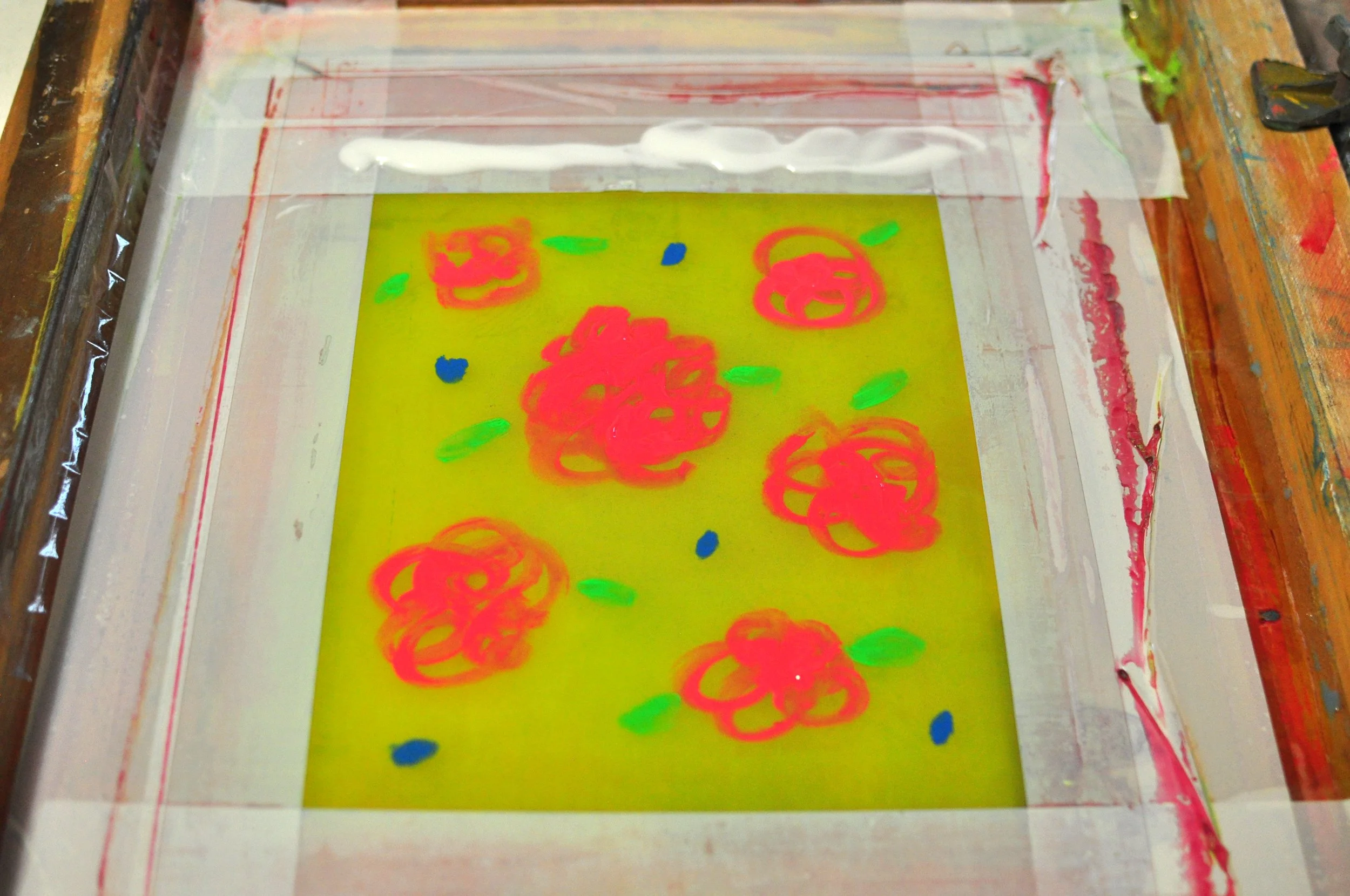ChatGPT said: Unbiased breakdown of 10:9 Design reviews: what you should know before ordering
Discover the Numerous Kinds Of Screen Printing Techniques for Your Following Job
Screen printing supplies a varied series of techniques that can improve any imaginative project. From typical techniques like serigraphy to modern-day advancements such as direct-to-garment printing, each approach has its special benefits. Specialty choices, consisting of metallic and green inks, present a lot more opportunities. Recognizing these strategies can significantly influence the final outcome. The challenge lies in choosing the most ideal technique for specific requirements and preferred impacts. What variables should one think about?

The Essentials of Screen Printing
Although screen printing might appear facility, it is basically a simple process that entails moving ink via a mesh screen onto different surface areas. The strategy starts with the creation of a pattern, which specifies the design to be printed. This stencil is affixed to a mesh screen, commonly made from polyester or nylon. Once the pattern remains in place, ink is related to the screen and pressed through the mesh using a squeegee, causing the preferred pattern being published on the underlying material.
Screen printing can be performed on a wide variety of substratums, including textile, plastic, and paper, making it a flexible option for various jobs. The process enables vibrant shades and complex designs, making it preferred in markets such as art, style, and marketing. Recognizing these fundamentals equips people with the foundational knowledge called for to check out even more advanced methods in screen printing.
Traditional Screen Printing Techniques
Conventional screen printing methods have actually been employed for centuries, maintaining the craftsmanship and artistry of this approach. This method utilizes a mesh screen to move ink onto a substrate, such as fabric or paper, enabling durable and vivid styles. The procedure starts with creating a stencil, which blocks specific locations of the screen to control where the ink will be applied.
One popular method is serigraphy, commonly utilized for limited editions and artistic prints. An additional is the usage of water-based inks, which are eco-friendly and offer a soft feeling on textiles - 10:9 Design Company. Additionally, conventional techniques can include manual printing, where craftsmens use ink with a squeegee, making sure precision and interest to detail
These strategies stay valued in the industry for their responsive quality and the distinct textures they generate, attracting both creators and customers that appreciate the heritage of screen printing.
Digital Screen Printing Innovations
As the need for faster production and modification in the printing market has actually surged, electronic screen printing advancements have actually arised as a game-changer. This innovation blends typical screen printing methods with digital processes, allowing for quick prototyping and elaborate layouts that were previously tough to achieve. One substantial improvement is the intro of direct-to-garment (DTG) printing, which helps with top quality, full-color prints on various fabrics without the need for displays. In addition, innovations in ink solutions have caused environmentally friendly options that keep vivid colors while reducing environmental impact. The use of automated systems even more enhances production, decreasing labor costs and enhancing accuracy. These technologies not just cater to little batch orders and tailored designs however additionally permit quicker turn-around times, making them suitable for companies concentrated on conference consumer demands in a fast-paced market. Digital screen printing, subsequently, represents a necessary advancement in the domain of printing techniques.
Specialty Screen Printing Techniques
Discovering specialized screen printing approaches reveals a diverse array of methods that press the borders of creative thinking and functionality in the printing industry. Among these, glow-in-the-dark inks offer a special aesthetic result, making layouts come to life in low-light problems. Metal inks, known for their shimmering finish, include a touch of deluxe to published products. An additional cutting-edge approach is discharge printing, which gets rid of color from the material as opposed great post to read to including ink, causing a soft, classic feeling. High-density printing produces an increased texture externally, enhancing tactile involvement. In addition, water-based inks are obtaining popularity for their vibrant shades and lowered environmental effect. Each of these specialty techniques deals with details layout needs, allowing artists and brands to create standout items that reverberate with their target markets. By leveraging these approaches, companies can elevate their screen printing tasks to new elevations, ensuring memorable impacts.
Eco-Friendly Screen Printing Options
Eco-friendly screen printing options are gaining grip as the market changes in the direction of sustainability. Lasting ink choices and the usage of naturally degradable materials are crucial parts in lowering the ecological impact of the printing procedure. By adopting these methods, screen printers can contribute to a much more sustainable future while keeping high-grade results.
Lasting Ink Options

Biodegradable Products Use
As the screen printing market develops, the unification of naturally degradable materials is coming to be significantly crucial for environmentally mindful practices. Developers and producers are currently exploring inks and substratums made from natural, renewable energies that disintegrate more effectively than traditional counterparts. These biodegradable choices minimize plastic waste and lessen environmental influence, aligning with the growing need for sustainable items.
Common examples consist of water-based inks and natural cotton fabrics, both of which lessen unsafe chemicals and promote eco-friendliness. Brands that embrace these products frequently improve their market charm, attracting consumers who focus on sustainability. As recognition of environmental issues proceeds to climb, the change towards naturally degradable products in screen printing is likely to obtain energy, fostering a greener industry standard.
Selecting the Right Technique for Your Project
Exactly how can one determine the most suitable screen printing technique for a certain task? The choice hinges on several elements, including the product to be printed on, the complexity of the design, and the desired production visite site quantity - 10:9 Design LLC Company. Direct-to-garment printing is ideal for intricate layouts with countless colors, while conventional screen printing excels for bigger runs of easier graphics.
Furthermore, consideration of the end-use of the published product is necessary. For outside applications, techniques that supply durability and climate resistance, such as plastisol ink, may be chosen. Conversely, environmentally-conscious tasks view website might benefit from eco-friendly materials or water-based inks.
Ultimately, recognizing the job's unique needs enables for an enlightened selection, guaranteeing both aesthetic appeal and practical long life. By reviewing layout complexity, product compatibility, and manufacturing scale, one can efficiently pick the most appropriate screen printing technique to fulfill their job's objectives.
Often Asked Inquiries
What Is the History of Screen Printing?
Screen printing came from ancient China around 1000 ADVERTISEMENT, developing via Japan and Europe. By the 20th century, it became preferred in commercial art and fashion, revolutionizing exactly how layouts were produced and dispersed worldwide.

Just how Do I Prepare Artwork for Screen Printing?
To prepare art work for screen printing, one should assure high resolution, make use of an ideal color mode, create separate layers for each shade, and transform message to details, ensuring compatibility with the printing process and desired outcome.
What Products Are Ideal for Screen Printing?
The finest materials for screen printing include top quality inks, resilient screens, and ideal substratums like cotton, polyester, or blends. In addition, making use of ideal emulsion and squeegees can boost the printing procedure and results.
Can I Evaluate Print at Home?
Yes, screen printing in the house is possible. With the right products, configuration, and techniques, people can develop top notch prints. Cautious factor to consider of work space and equipment is vital for effective outcomes.
What Are Usual Mistakes in Screen Printing?
Typical errors in screen printing consist of improper direct exposure times, insufficient ink consistency, misalignment of displays, inadequate cleansing of materials, and ignoring to examine prints. These mistakes can endanger the top quality and precision of the last product.
Screen printing may seem complex, it is fundamentally a simple process that involves transferring ink via a mesh screen onto different surfaces. As the demand for faster production and personalization in the printing industry has actually surged, digital screen printing innovations have actually arised as a game-changer. Exploring specialty screen printing techniques reveals a diverse selection of strategies that push the limits of imagination and performance in the printing industry. The best products for screen printing consist of top quality inks, resilient screens, and ideal substratums like cotton, polyester, or blends (10:9 Design Screen Printing Texas). Typical blunders in screen printing include inappropriate direct exposure times, insufficient ink uniformity, imbalance of screens, not enough cleansing of products, and ignoring to evaluate prints